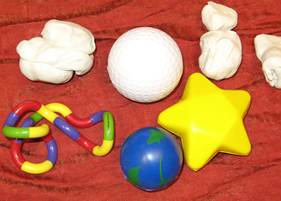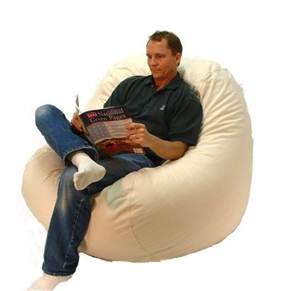 |
 |
|
Setting Up the Classroom for Safety, Stability, and Well-BeingCreating and maintaining a comfortable, organized, and calming classroom space can promote a sense of safety and stability for students. This is particularly important for refugees and others who have experienced trauma and toxic stress in their lives. It is also important to be aware of cultural norms and taboos regarding touching, gender interaction, and needs for personal space. Here are a few ideas for creating a classroom environment that can promote mental health. Even when you are teaching in a cramped space or in a room that changes from week to week, you can make small changes to improve your environment. See Classroom in a Bag for a fun lesson on sprucing up a dull, cramped room.
See Horsman, J. (1998). "But I'm not a therapist! The challenge of creating effective literacy learning for survivors of trauma." In S. Shore (Ed.), Australian Council for Adult Literacy 21st National Conference: Literacy on the line. Conference proceedings (pp. 1-8). Adelaide: University of South Australia.
The stress balls and toys continue to be a big hit. We still keep them in an old coffee can on the desks and all students play with them throughout the day.- Phillip Howard, Haitian Multi-Service Center, Dorchester, MA  It is common for people to engage in repetitive movements or motions when they are bored, anxious, tired, or need to keep focused, especially when they are tired or distracted. Students may click their pen tops, tap their pencils, bounce their knees, chew gum, doodle, or tap their feet in an attempt - often unconsciously - to stay alert and calm during certain periods in class. Once teachers understand the need for some students to fiddle, they may feel less disrespected and more sympathetic. Further, they can discuss these behaviors with students as something that can help them, then offer alternatives to the foot tapping or pen clicking that may disturb others. That’s where "fidgets" come in. It is common for people to engage in repetitive movements or motions when they are bored, anxious, tired, or need to keep focused, especially when they are tired or distracted. Students may click their pen tops, tap their pencils, bounce their knees, chew gum, doodle, or tap their feet in an attempt - often unconsciously - to stay alert and calm during certain periods in class. Once teachers understand the need for some students to fiddle, they may feel less disrespected and more sympathetic. Further, they can discuss these behaviors with students as something that can help them, then offer alternatives to the foot tapping or pen clicking that may disturb others. That’s where "fidgets" come in.
Fidgets are small items people use to fiddle with to help them concentrate. These include, but are not limited to squeezy or squishy stress balls, small bits of plasticene clay, bendable sticks, etc. In our project, teachers collected a variety of fidget types they had sampled at the initial institute and follow up workshops. They introduced them to students and invited them to explore their use. Most teachers kept a fidget basket in each class, reminding students it was there if they seemed agitated. The best fidget for classroom use were silent and somewhat banal; they were not so intriguing that they detracted from the learning tasks, and they were not noisy enough to distract others. The simplest form of fidget was plasticene clay. Small pieces can be kneaded in the hand providing sensory regulation. The clay doesn’t dry out and the neutral shade does not stain the hands.
The two stress reduction activities I found my students to be most consistently fond of this month are the starting of class with relaxing music and clay. On the one day that I was a little rushed in setting things up and didn’t make the effort to play the music, a few people mentioned missing it and wanting it. As for the clay, I have been delighted and surprised by the beautiful things that students have sculpted with it. At the end of class, they show me what they've made with obvious pride and I haven’t the heart to destroy them. Therefore, next to the Letting Go Bowl I regularly display their creations.- Jeri Bayer, the Welcome Project, Somerville, MA |
| New England Literacy Resource Center |
Copyright 2008 World Education, Inc.
Comments/Questions? Email us at wei@worlded.org
 In the event a student feels overwhelmed and needs to take a break from whatever is causing anxiety, it is useful to have a designated area - inside or outside of the regular classroom - where students can sit out for a little. Sometimes a brief break is all a student needs to regroup, making it possible to rejoin the class instead of leaving entirely. A rocking chair or beanbag set aside is a place to start. Providing self-soothing activities nearby - mandalas to color, music with earphones, and journals - can help students get past a difficult block of time. Canadian educator Jenny Horseman (1998) suggests the value of discussing the continuum of being fully present or not in a classroom, allowing students to make choices, without judgment, about what they can sustain in a classroom.
In the event a student feels overwhelmed and needs to take a break from whatever is causing anxiety, it is useful to have a designated area - inside or outside of the regular classroom - where students can sit out for a little. Sometimes a brief break is all a student needs to regroup, making it possible to rejoin the class instead of leaving entirely. A rocking chair or beanbag set aside is a place to start. Providing self-soothing activities nearby - mandalas to color, music with earphones, and journals - can help students get past a difficult block of time. Canadian educator Jenny Horseman (1998) suggests the value of discussing the continuum of being fully present or not in a classroom, allowing students to make choices, without judgment, about what they can sustain in a classroom.